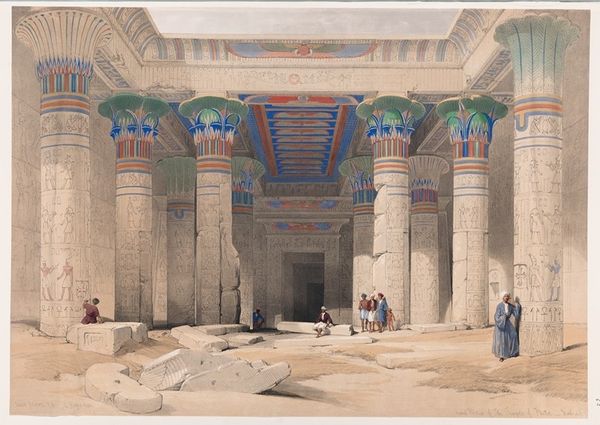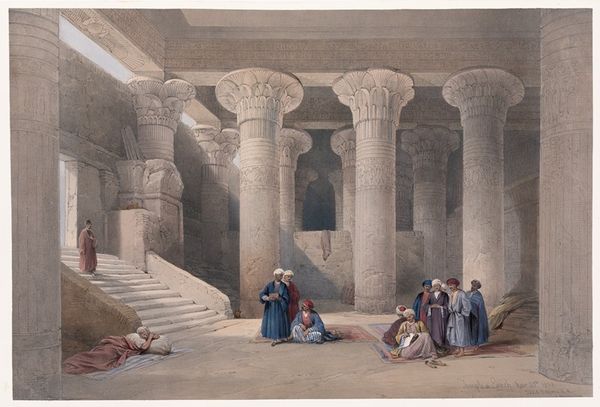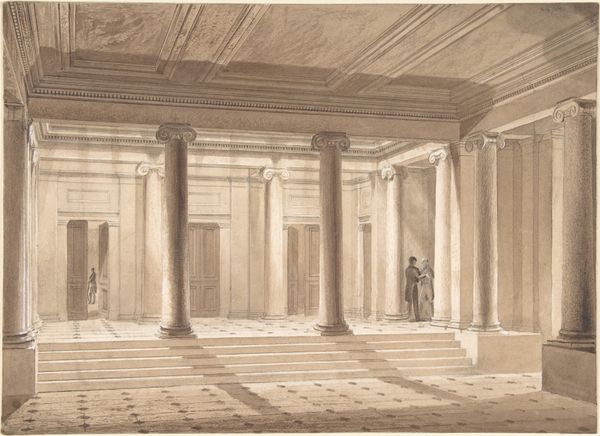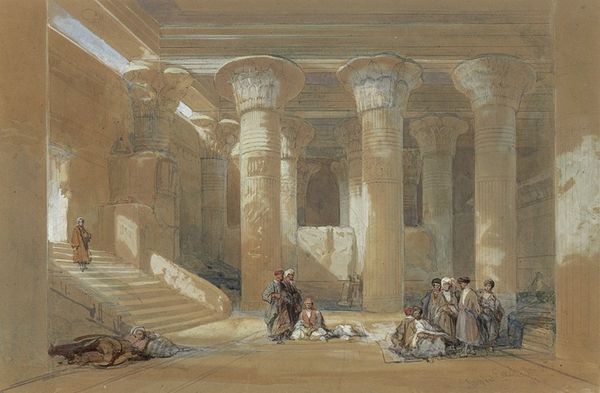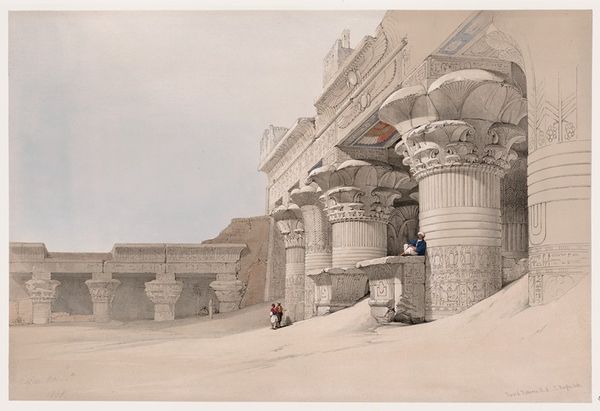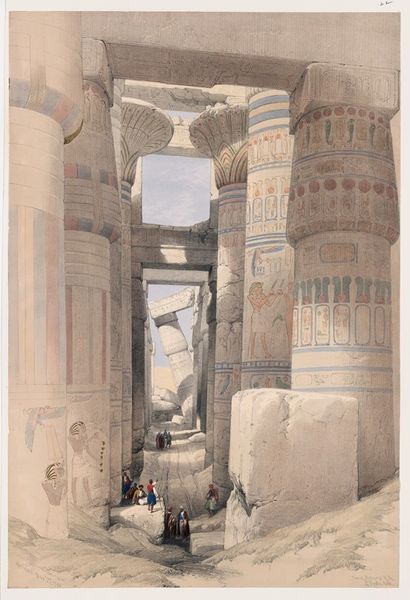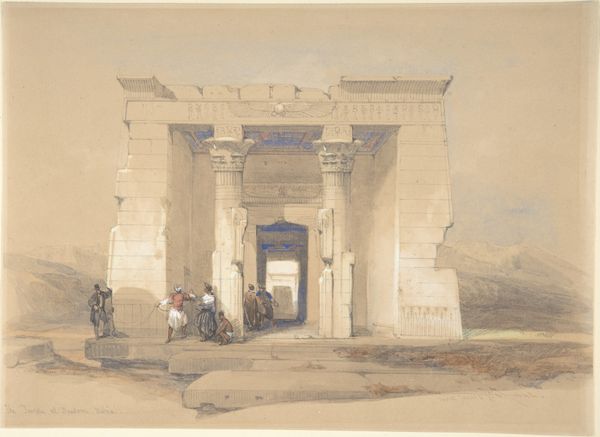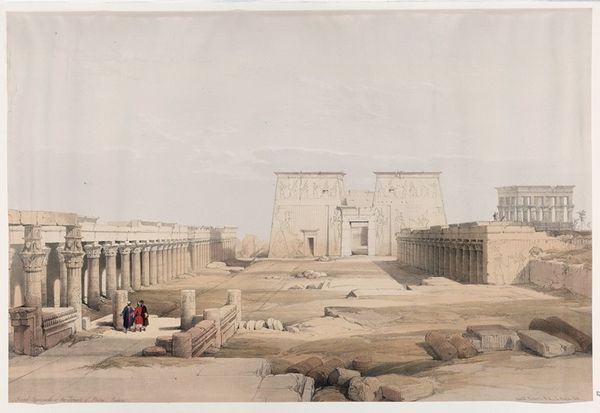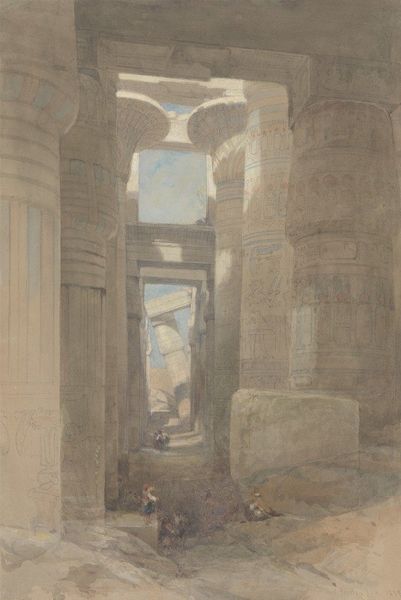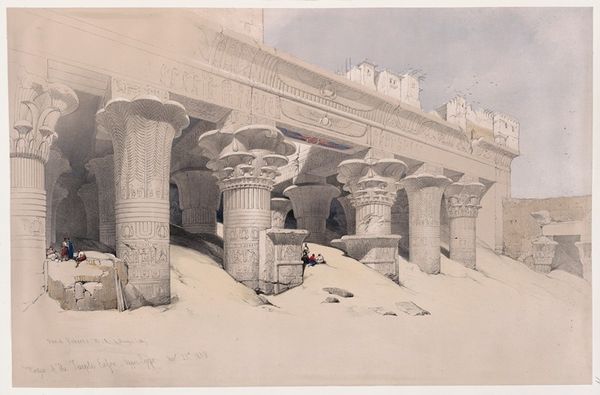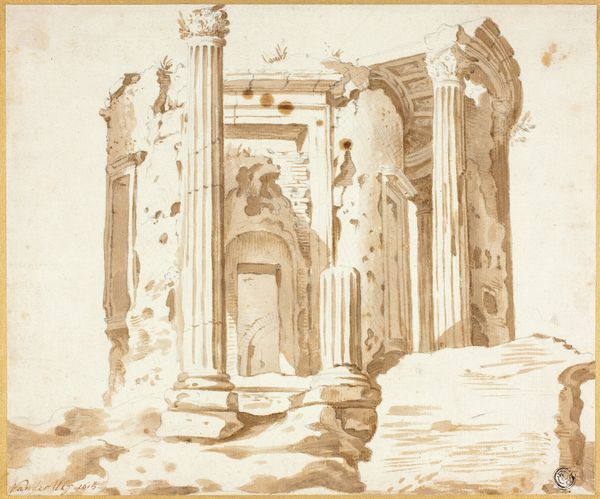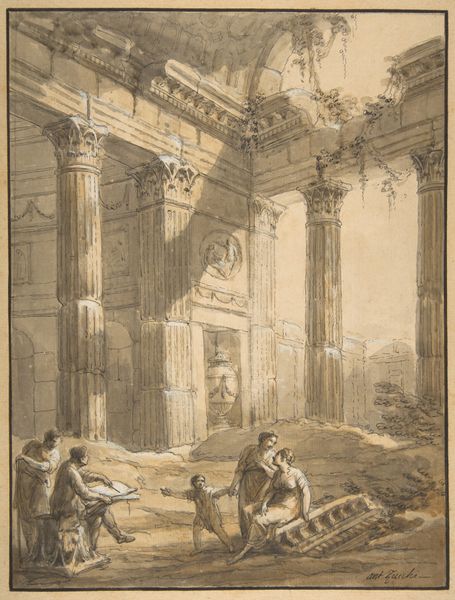![Excavated Temple of Gyrshe [Gerf Hussein], Nubia. by David Roberts](/_next/image?url=https%3A%2F%2Fd2w8kbdekdi1gv.cloudfront.net%2FeyJidWNrZXQiOiAiYXJ0ZXJhLWltYWdlcy1idWNrZXQiLCAia2V5IjogImFydHdvcmtzL2JmYTJmNDYwLTgxMzktNDYxMS1iYTNmLWIxNDEwMDUzOGNiZi9iZmEyZjQ2MC04MTM5LTQ2MTEtYmEzZi1iMTQxMDA1MzhjYmZfZnVsbC5qcGciLCAiZWRpdHMiOiB7InJlc2l6ZSI6IHsid2lkdGgiOiAxOTIwLCAiaGVpZ2h0IjogMTkyMCwgImZpdCI6ICJpbnNpZGUifX19&w=1920&q=75)
painting, watercolor
#
painting
#
landscape
#
ancient-egyptian-art
#
perspective
#
figuration
#
watercolor
#
ancient-mediterranean
#
watercolor
Copyright: Public Domain: Artvee
Curator: What strikes me most is the palpable sense of awe. The figures, dwarfed by the monumental statues, offer an immediate connection to our own fleeting existence within the grand scope of history. Editor: Indeed, this watercolor by David Roberts, dating from between 1846 and 1849, portrays the "Excavated Temple of Gyrshe [Gerf Hussein], Nubia." Roberts was known for his detailed architectural studies, and here he captures not only the grandeur of the temple, but also its appropriation by Western eyes during the age of exploration. Curator: Precisely. The Western gaze is evident, not just in the act of documentation, but in the figures themselves, almost staged. It's as if they are actors in a play, positioned to emphasize the scale and exoticism for a European audience. The light is strategically employed to cast an air of mystery and revelation upon the site. Editor: Note also the deliberate play with perspective. Roberts employs linear perspective to guide the eye deep into the temple's interior, exaggerating the already immense scale. Consider, too, that this “excavation” is not a neutral act; it speaks volumes about colonial power and the desire to possess and understand ancient civilizations. Curator: Yes, but beyond the colonial context, there's also something eternally human about the scene. We, like those figures, are drawn to the symbolic weight of these massive structures. The pharaohs, frozen in stone, are symbols of permanence, inviting introspection. Do we also wish to achieve such permanence? Editor: Roberts provides us with insight to how such an aesthetic was marketed and consumed in 19th-century Europe. The watercolor was then reproduced as lithographs to reach a larger audience, influencing popular perceptions of ancient Egypt. Curator: Understanding the historical lens deepens our appreciation for the emotional layers this image contains. We are reminded that art always engages in an interweaving of past and present. Editor: Ultimately, Robert’s painting underscores art’s role not merely as historical record, but as a cultural artifact. We should consider its production, reception, and lasting political undertones, even today.
Comments
No comments
Be the first to comment and join the conversation on the ultimate creative platform.
